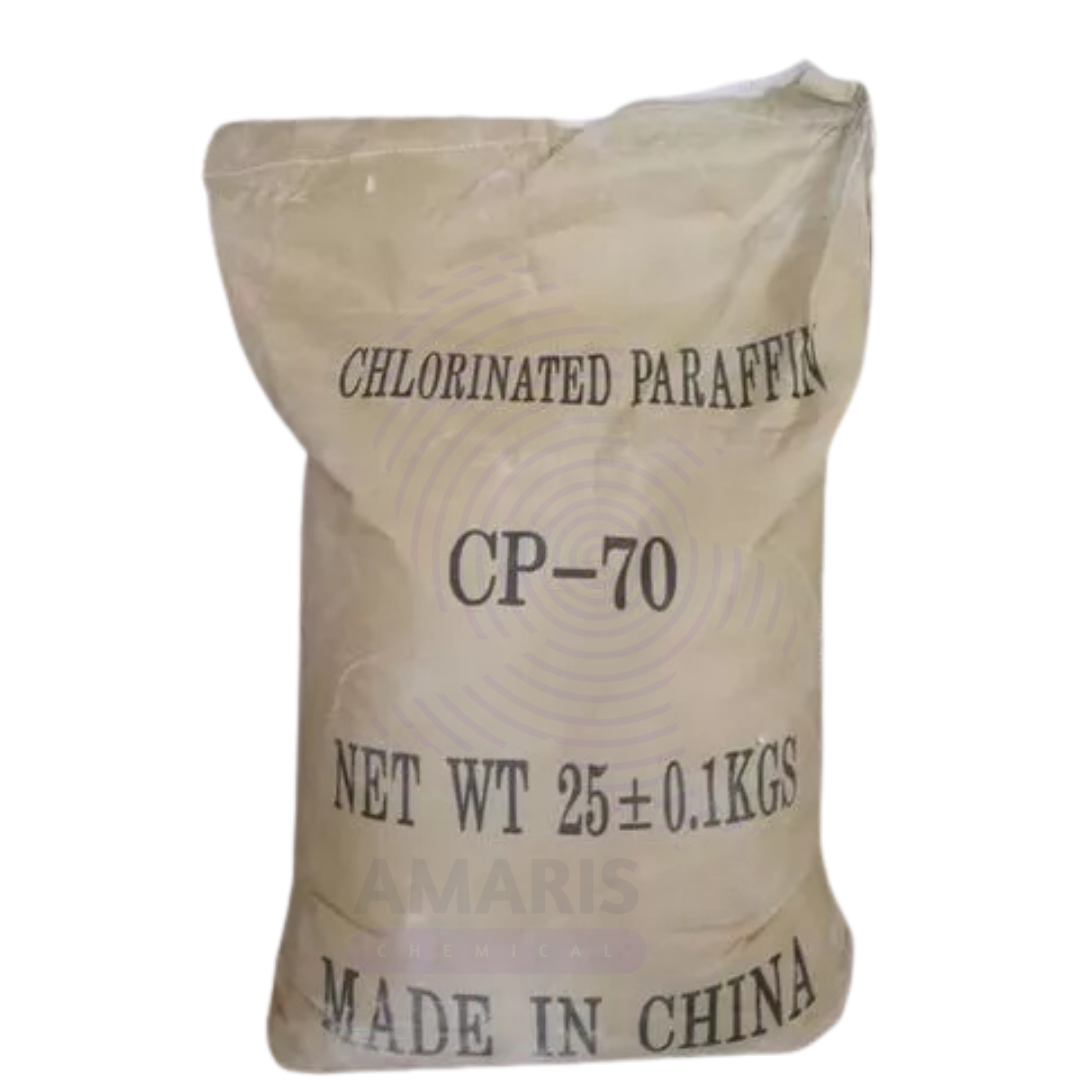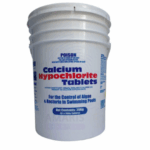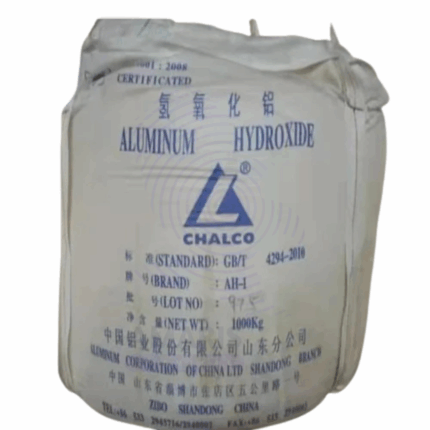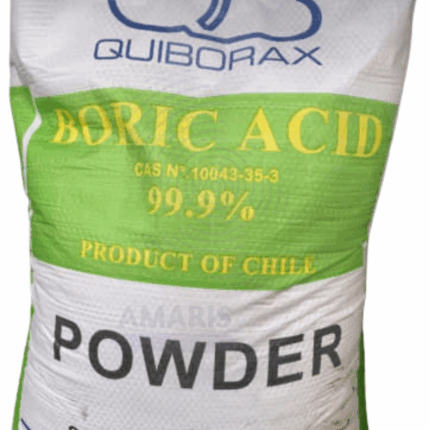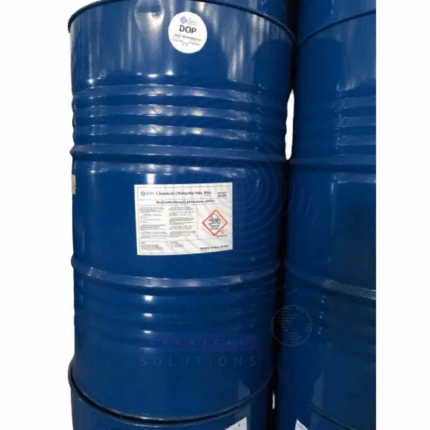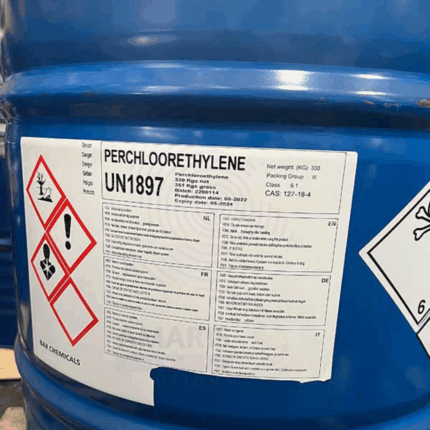Chlorinated Paraffin Wax
Whatsapp Order
Chlorinated Paraffin Wax is a synthetic chlorinated hydrocarbon obtained by the chlorination of paraffin wax. It typically appears as a waxy solid, ranging from light yellow to dark brown depending on the degree of chlorination and the chain length of the paraffins. CPW is valued for its excellent flame retardant, plasticizing, and extreme pressure (EP) additive properties. It is widely used in industrial applications including metalworking fluids, PVC formulations, rubber compounding, and flame retardant materials. CPW offers thermal stability, chemical resistance, and lubricating qualities, making it a versatile industrial additive.
Description
Table of Contents
Toggle
Chlorinated Paraffin Wax
Primary Uses
- Industrial & Manufacturing Applications
- Used as a flame retardant additive in paints, coatings, plastics (especially PVC), textiles, and rubber products.
- Acts as an extreme pressure (EP) additive in metalworking fluids and lubricants to reduce wear and friction.
- Serves as a plasticizer and stabilizer in PVC and other polymer formulations, improving flexibility and durability.
- Employed in sealants, adhesives, and caulks to enhance performance and resistance to environmental factors.
- Rubber Industry
- Incorporated into rubber compounds to improve processing characteristics, flexibility, and resistance to abrasion.
Secondary Uses
- Paints and Coatings
- Used as a secondary plasticizer and pigment dispersant in specialty coatings.
- Electrical Industry
- Utilized in cable sheathing and insulation materials for its flame retardant and insulating properties.
- Textile Industry
- Applied in textile finishing agents for flame retardancy and durability enhancements.
- Leather Industry
- Added to leather treatments to improve water resistance and durability.
KEY PRODUCT FEATURES
1. Basic Identification Attributes
- Chemical Name (IUPAC): Chlorinated paraffin (complex mixture of polychlorinated n-alkanes)
- Common/Trade Name: Chlorinated Paraffin Wax (CPW)
- CAS Number: 63449-39-8 (varies by chlorination degree)
- HS Code: 2712.90.20
- Molecular Formula: Variable — CnH2n+2-xClx (where n = 10–30+, x = chlorine atoms)
- Synonyms:
- CPW
- Chlorinated paraffin
- Polychlorinated n-alkanes
2. Physical & Chemical Properties
- Physical State: Solid wax (flakes, powder, or pastilles)
- Color & Odor: Light yellow to dark brown; mild characteristic odor
- Melting Point: Typically 50–105°C depending on chlorination and chain length
- Boiling Point: Decomposes before boiling
- Density: Approx. 1.3–1.6 g/cm³ depending on chlorination
- Solubility: Insoluble in water; soluble in organic solvents such as chlorinated solvents, aromatic hydrocarbons, and oils
- Chlorine Content: Typically 40–70% by weight, depending on product grade
- Stability: Chemically stable under normal conditions; decomposes at elevated temperatures releasing HCl
3. Safety & Hazard Attributes
- Hazard Class (GHS): Classified as hazardous depending on chlorination degree and formulation; may be harmful if inhaled or ingested
- NFPA Ratings:
- Health: 2
- Flammability: 1
- Reactivity: 1
- Exposure Limits: Use with appropriate ventilation; avoid inhalation of dust or fumes
- Toxicity: Possible skin and respiratory irritant; suspected to be persistent organic pollutant (varies by grade)
- Reactivity: Stable but may release toxic gases (HCl) on thermal decomposition
4. Storage & Handling Attributes
- Storage Conditions: Store in a cool, dry, well-ventilated area away from heat and ignition sources
- Container Type: Sealed metal drums or fiberboard containers lined with inert materials
- Shelf Life: Up to 3 years if stored properly
- Special Handling: Use PPE including gloves, goggles, and dust masks; avoid dust generation
5. Regulatory & Compliance Attributes
- REACH Status: Subject to restrictions due to environmental and health concerns (varies by chlorine content)
- Transportation: Classified as non-dangerous goods but subject to local regulations
- Waste Disposal: Dispose as hazardous waste in compliance with local regulations; avoid environmental release
- Environmental Restrictions: Some chlorinated paraffins are restricted or banned in certain regions (e.g., EU) due to persistence and bioaccumulation
6. Environmental & Health Impact
- Ecotoxicity: Persistent and bioaccumulative; toxic to aquatic organisms
- Persistence: Very persistent in the environment
- Bioaccumulation: High potential for bioaccumulation in aquatic organisms
- Carcinogenicity/Mutagenicity: Some grades are suspected carcinogens; regulatory agencies recommend caution
- Biodegradability: Poorly biodegradable
SAFETY HANDLING PRECAUTIONS
Safety Handling Precautions
- PPE: Protective gloves, safety goggles, and respiratory protection if dust or fumes are present
- Handling: Avoid inhalation of dust or vapors; use local exhaust ventilation
- Storage: Keep containers tightly closed; store away from incompatible substances such as strong oxidizers
- Hygiene: Wash hands thoroughly after handling; do not eat, drink, or smoke during use
First Aid Measures
- Inhalation: Move affected person to fresh air; seek medical attention if breathing difficulties develop
- Skin Contact: Wash thoroughly with soap and water; seek medical attention if irritation persists
- Eye Contact: Rinse cautiously with water for 15 minutes; seek medical attention if irritation persists
- Ingestion: Do not induce vomiting; seek immediate medical attention
Firefighting Measures
- Fire Hazards: Combustible; may release toxic gases including HCl when burned
- Extinguishing Media: Use foam, dry chemical, or CO₂; avoid water jets
- Special Precautions: Firefighters should wear full protective gear and self-contained breathing apparatus
- Decomposition Products: Hydrogen chloride, carbon monoxide, and other toxic fumes
Related products
Aluminum hydroxide
Aluminum Hydroxide, chemically known as Al(OH)₃, is a white, odorless, and odorless powder or gelatinous substance. It is widely used in pharmaceuticals as an antacid to neutralize stomach acid and relieve indigestion and heartburn. Beyond healthcare, aluminum hydroxide is a crucial component in water purification, fire retardants, and as a precursor or filler in various industrial applications. It functions as a flame retardant by releasing water upon heating, thus cooling the material and diluting flammable gases. Due to its amphoteric nature, it can react both as an acid and base, enhancing its versatility. Aluminum hydroxide is often utilized in manufacturing aluminum salts and in producing aluminum oxide.
Boric Acid
Boric Acid, chemically known as hydrogen borate or boracic acid, is a weak, monobasic Lewis acid of boron. It appears as a white, crystalline powder or granules that are odorless and slightly soluble in water. Boric Acid is commonly used in antiseptics, insecticides, flame retardants, and as a buffering agent in various industrial and pharmaceutical applications. Due to its mild antiseptic and antifungal properties, it is often used in ophthalmic, dermatologic, and other personal care formulations. It also plays a key role in glass and ceramics manufacturing as well as in agriculture.
Dibutyl Phthalate
Dibutyl Phthalate (DBP) is a colorless, oily liquid with a faint aromatic odor, belonging to the phthalate ester family. It is primarily used as a plasticizer to impart flexibility, durability, and softness to rigid polymers like polyvinyl chloride (PVC). DBP is valued for its excellent compatibility with polymers, good plasticizing efficiency, low volatility, and resistance to extraction by water and oils. Besides plastics, DBP is utilized in coatings, adhesives, printing inks, cosmetics, and other industrial applications. Its moderate cost and versatile performance make it a key chemical in various manufacturing sectors.
Diethyl Phthalate
Diethyl Phthalate is a high-purity, colorless, oily liquid with a faint, sweet aromatic odor. With a minimum of 99% active content, DEP 99% is a trusted solvent and plasticizer that offers excellent stability, low volatility, and high compatibility with a wide range of organic and polymeric materials. It is widely used in the cosmetic, pharmaceutical, plastics, coatings, and fragrance industries where purity is critical for both performance and safety. Its mild toxicological profile and solvency characteristics make it a versatile component in numerous sensitive and industrial applications.
Dioctyl Phthalate
Dioctyl Phthalate (DOP), also known as di(2-ethylhexyl) phthalate (DEHP), is a widely used plasticizer primarily added to polyvinyl chloride (PVC) and other polymers to enhance flexibility, durability, and workability. It is a clear, colorless, oily liquid with a slight ester odor. Due to its excellent compatibility with many polymers and long-lasting plasticizing effects, DOP is one of the most common phthalate plasticizers used in industries such as construction, automotive, packaging, and medical devices. It also serves as a solvent and dispersant in various chemical processes.
Perchloroethylene
Perchloroethylene (also known as tetrachloroethylene or PCE) is a clear, colorless liquid with a sweet odor, widely used as a solvent in dry cleaning and industrial degreasing. It has excellent solvent power for organic materials, is non-flammable, and chemically stable under normal conditions. Perchloroethylene is valued for its efficiency in removing oils, greases, and waxes from fabrics and metals, and serves as a key chemical intermediate in various industrial applications.
Sabowax
Sabowax is a high-quality wax product widely used in industries such as cosmetics, pharmaceuticals, food processing, and coatings. It serves as a key ingredient to impart texture, moisture resistance, and stability to various formulations. Sabowax provides excellent emulsification, film-forming properties, and enhances the sensory feel of creams, ointments, and polishes.


 Preservatives(food)
Preservatives(food) Flavor Enhancers
Flavor Enhancers Acidulants
Acidulants Sweeteners
Sweeteners Antioxidants
Antioxidants Colorants(food)
Colorants(food) Nutraceutical Ingredients (food)
Nutraceutical Ingredients (food) Nutrient Supplements
Nutrient Supplements Emulsifiers
Emulsifiers
 Collectors
Collectors Dust Suppressants
Dust Suppressants Explosives and Blasting Agents
Explosives and Blasting Agents Flocculants and Coagulants
Flocculants and Coagulants Frothers
Frothers Leaching Agents
Leaching Agents pH Modifiers
pH Modifiers Precious Metal Extraction Agents
Precious Metal Extraction Agents
 Antioxidants(plastic)
Antioxidants(plastic) Colorants (Pigments, Dyes)
Colorants (Pigments, Dyes) Fillers and Reinforcements
Fillers and Reinforcements Flame Retardants
Flame Retardants Monomers
Monomers Plasticizers
Plasticizers Polymerization Initiators
Polymerization Initiators Stabilizers (UV, Heat)
Stabilizers (UV, Heat)
 Antifoaming Agents
Antifoaming Agents Chelating Agents
Chelating Agents Coagulants and Flocculants
Coagulants and Flocculants Corrosion Inhibitors
Corrosion Inhibitors Disinfectants and Biocides
Disinfectants and Biocides Oxidizing Agents
Oxidizing Agents pH Adjusters
pH Adjusters Scale Inhibitors( water)
Scale Inhibitors( water)
 Antioxidants(cosmetic)
Antioxidants(cosmetic) Emollients
Emollients Fragrances and Essential Oils
Fragrances and Essential Oils Humectants
Humectants Preservatives
Preservatives Surfactants(cosmetic)
Surfactants(cosmetic) Thickeners
Thickeners UV Filters
UV Filters
 Fertilizers
Fertilizers Soil Conditioners
Soil Conditioners Plant Growth Regulators
Plant Growth Regulators Animal Feed Additives
Animal Feed Additives Biostimulants
Biostimulants Pesticides (Herbicides, Insecticides, Fungicides)
Pesticides (Herbicides, Insecticides, Fungicides)
 Active Pharmaceutical Ingredients (APIs)
Active Pharmaceutical Ingredients (APIs) Excipients
Excipients Solvents(pharmaceutical)
Solvents(pharmaceutical) Antibiotics
Antibiotics Antiseptics and Disinfectants
Antiseptics and Disinfectants Vaccine Adjuvants
Vaccine Adjuvants Nutraceutical Ingredients (pharmaceutical)
Nutraceutical Ingredients (pharmaceutical) Analgesics & Antipyretics
Analgesics & Antipyretics
 Analytical Reagents
Analytical Reagents Solvents(lab)
Solvents(lab) Chromatography Chemicals
Chromatography Chemicals Spectroscopy Reagents
Spectroscopy Reagents microbiology-and-cell-culture-reagents
microbiology-and-cell-culture-reagents Molecular Biology Reagents
Molecular Biology Reagents Biochemical Reagents
Biochemical Reagents Inorganic and Organic Standards
Inorganic and Organic Standards Laboratory Safety Chemicals
Laboratory Safety Chemicals Specialty Laboratory Chemicals(Special Laboratory Equipment)
Specialty Laboratory Chemicals(Special Laboratory Equipment)
 Demulsifiers
Demulsifiers Hydraulic Fracturing Fluids
Hydraulic Fracturing Fluids Scale Inhibitors(oil)
Scale Inhibitors(oil) Surfactants(oil)
Surfactants(oil) Drilling Fluids
Drilling Fluids
 Dyes and Pigments
Dyes and Pigments Bleaching Agents
Bleaching Agents Softening Agents
Softening Agents Finishing Agents
Finishing Agents Antistatic Agents
Antistatic Agents
 Admixtures
Admixtures Waterproofing Agents
Waterproofing Agents Sealants and Adhesives
Sealants and Adhesives Curing Compounds
Curing Compounds Concrete Repair Chemicals
Concrete Repair Chemicals Anti-Corrosion Coatings
Anti-Corrosion Coatings
 Surfactants(cleaning)
Surfactants(cleaning) Builders
Builders Enzymes
Enzymes Solvents (Cleaning)
Solvents (Cleaning) Fragrances
Fragrances
 Electronic Chemicals
Electronic Chemicals Catalysts
Catalysts Lubricants
Lubricants Photographic Chemicals
Photographic Chemicals Refrigerants
Refrigerants Automotive chemicals
Automotive chemicals Pyrotechnic Chemicals
Pyrotechnic Chemicals
 Biodegradable Surfactants
Biodegradable Surfactants Bio-based Solvents
Bio-based Solvents Renewable Polymers
Renewable Polymers Carbon Capture Chemicals
Carbon Capture Chemicals Wastewater Treatment Chemicals
Wastewater Treatment Chemicals
 Pigments
Pigments Solvents(paint)
Solvents(paint) Specialty Coatings
Specialty Coatings Binders/Resins
Binders/Resins Additives
Additives Driers
Driers Anti-Corrosion Agents
Anti-Corrosion Agents Functional Coatings
Functional Coatings Application-Specific Coatings
Application-Specific Coatings
 Fresh Herbs
Fresh Herbs Ground Spices
Ground Spices Whole Spices
Whole Spices Spice Blends
Spice Blends Dried Herbs
Dried Herbs
 Leavening Agents
Leavening Agents Dough Conditioners
Dough Conditioners Flour Treatments
Flour Treatments Fat Replacers
Fat Replacers Decoratives
Decoratives Preservatives(baking)
Preservatives(baking)
 Plasticizers & Softeners
Plasticizers & Softeners Reinforcing Agents
Reinforcing Agents Adhesion Promoters
Adhesion Promoters Vulcanizing Agents
Vulcanizing Agents Antidegradants
Antidegradants Blowing Agents
Blowing Agents Fillers & Extenders
Fillers & Extenders Accelerators & Retarders
Accelerators & Retarders